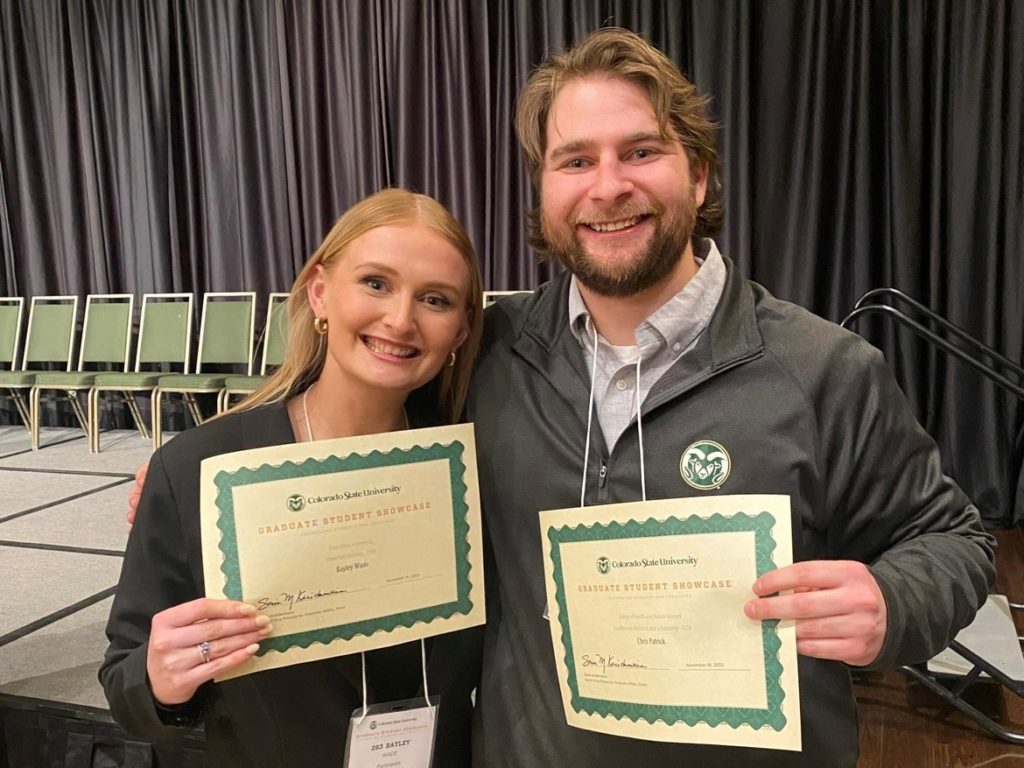
Chris Patrick, a graduate student in the Department of Health and Exercise Science, has worked to study how multiple sclerosis causes impairments, something that is still not definitive. Patrick was recognized with the Excellence in Research and Scholarship award at CSU’s Graduate Student Showcase, one of five awarded by the College of Health and Human Sciences. His research furthers the investigation of multiple sclerosis and the impact that it has on individuals.
What inspired you to conduct this research?
I’m really fascinated by the neural components that underlie the control of movement in health and disease. From watching professional athletes perform miraculous movements to the simplicity of grasping a glass of water to take a drink, I’m constantly in awe of how our nervous system can integrate so many things and output such smooth and flawless movements.
Multiple sclerosis (MS) is a debilitating neurological disease that negatively impacts mobility and balance. Yet we, as a scientific community, have not fully understood how exactly MS causes these impairments. Our current research looks to identify the role of a particular group of neurons originating in the brainstem called the reticular formation. Evidence from lesion studies in animals suggests that the reticular formation is critical for gross motor movements such as posture and locomotion, yet this pathway has never been studied extensively in people with MS.
Through this research, I get to explore my passion for the neuromuscular system and hopefully uncover key pathways involved in mobility impairments in people with MS, so that effective rehabilitation efforts can be created.
What impact do you hope this research will have?
From a research perspective, I hope our work highlights the need for further investigation into auxiliary descending motor neuron pathways, such as the reticulospinal tracts, in individuals with neurodegenerative diseases. While much effort has been put into studying the corticospinal tract, other tracts need similar attention to fully understand observed neuropathology.
From a broader impact perspective, I hope our work will lead to improved intervention/rehabilitation efforts in people with MS and other neurodegenerative diseases to improve their quality of life. If we find a strong connection linking reticular system dysfunction and mobility and balance impairments in people with MS, it’s possible that strengthening the connections in the reticular system could ameliorate some of these impairments. I should stress that much work needs to be completed before that point, but hopefully, our work will start pushing us closer to this outcome in the future.
What does receiving this award mean to you?
I feel incredibly grateful to be selected for this award by CHHS. It was a truly humbling experience to see all the amazing work being done across the college. There were so many amazing posters at the showcase this year, I think anyone could have won. While it is extremely gratifying to be recognized for my research and poster, to me, this award signifies the work of so many people. Science is and should be a team game.
This work would not be possible without my amazing lab mates in the Sensorimotor Neuroimaging Lab and constructive feedback/input from many in the Departments of Health and Exercise Science and Molecular, Cellular, and Integrative Neuroscience. A piece of this award goes to all who helped me along this great scientific journey!
The Department of Health and Exercise Science is a part of CSU’s College of Health and Human Sciences.